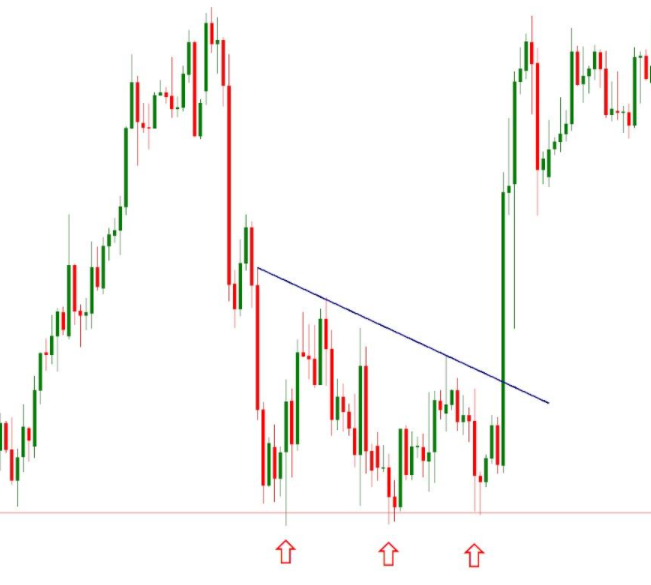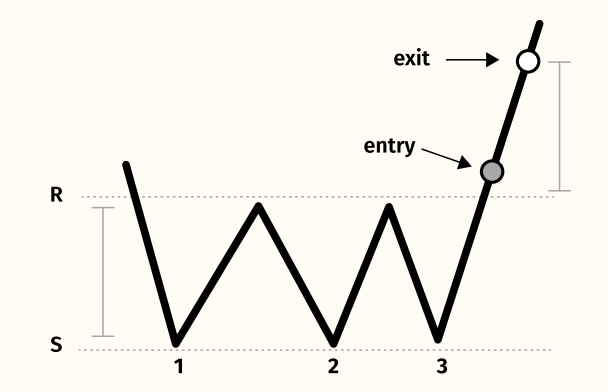Triple Bottom formation is the mirror image of the Triple Top. After an extended decline to new lows a stock puts-in a bottom on massive volume and a moderate rally ensues. After several sessions (sometimes weeks) the stock drifts back to test the first bottom and once again buyers push the stock higher. This process is repeated a third time before buyers finally overwhelm sellers and the stock moves significantly higher.
Timeframe:
- Applys to all timeframe

TRIPLE BOTTOM PATTERN
Notes:
- A triple bottom chart pattern is a bullish reversal chart pattern that is formed after the downtrend.
- This pattern is formed with three peaks below a resistance level/neckline.
- For triple bottoms volume must increase as the stock moves toward the bottom of the pattern. Increased volume at the bottom of the pattern suggests that accumulation is taking place.
- No triple bottom pattern is truly valid until the stock moves above the peak established between bottoms #2 and #3.
- Increase in volume near the Neck line determines the perfect breakout
Target TAKE PROFIT:
- Measure the size of the pattern(height) from the neckline to the lowest bottom and then apply the same distance to the upside starting from the Neck Line.
Stop LOSS:
- Put your stop level slightly below the higher low/bottom of the three bottoms in the pattern. If all are on the same level, put your stop level slightly below the bottoms or support level.
- It fails and is not valid if prices break back below the lows before hitting its price target. If prices are accepted back down into the bottoming zone once it has broken up through resistance, it severely weakens the odds that it is a valid TB pattern.
FOLLOW WA NOW WhatsApp channel!
[Disclaimer: This article is for informational purposes only and should not be construed as investment advice in any way. financestock.in advises its readers and viewers to consult their financial advisors before taking any money-related decisions.]
